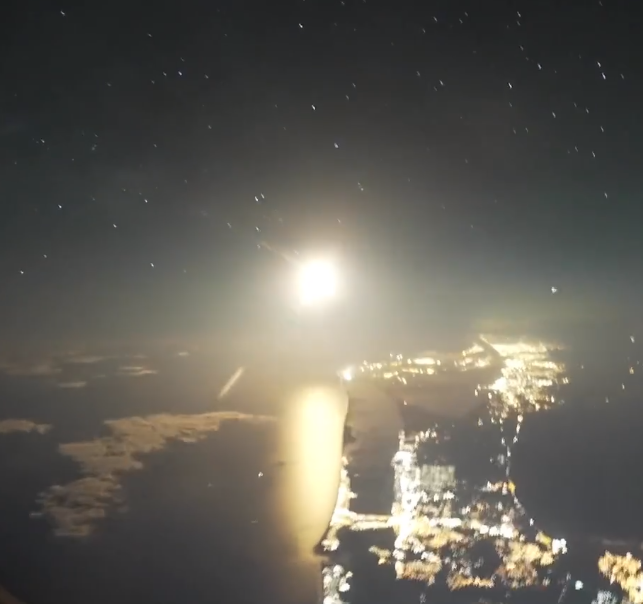We are all pulling for Elon Musk, one of America’s greatest entrepreneurs and pioneers in space.
On Tuesday night, SpaceX marked a significant milestone by launching a Falcon 9 rocket, commemorating 14 years since the rocket’s debut from the same launch pad. This latest mission, named Starlink 8-5, took off from pad 40 at Cape Canaveral Space Force Station at 10:16 p.m. EDT (0216 UTC). Over the years, SpaceX has conducted over 340 Falcon 9 launches, with 285 of these missions utilizing previously flown boosters, underscoring the company’s commitment to reusability and cost-effectiveness in space travel.
Falcon 9 lifting off with the BOMTD mission. pic.twitter.com/xvV6etCstO
— SLS
(@ScottLikesSLS) May 29, 2024
The Starlink 8-5 mission is part of SpaceX’s ongoing effort to expand its satellite internet constellation, aiming to provide global broadband coverage. The satellites launched on Tuesday will join thousands already in orbit, bringing enhanced connectivity to underserved and remote areas around the world. This mission further solidifies SpaceX’s leadership in the commercial space industry, leveraging the Falcon 9’s proven reliability and the innovative approach of reusing rocket components.
A Falcon 9 rocket launched 23 Starlink satellites from Florida, marking SpaceX’s 300th successful mission. The Falcon 9’s first stage came back to Earth and successfully landed on a drone ship in the Atlantic Ocean. This was the 12th launch and landing for this booster,… pic.twitter.com/HoMaPsmeoP
— Alex (@CEOre_) June 5, 2024
In addition to the Falcon 9 launch, Tuesday also brought significant news regarding SpaceX’s ambitious Starship program. On the same day, the Federal Aviation Administration (FAA) approved a launch license modification for SpaceX, allowing the company to proceed with Flight 4 of its Starship rocket. This approval came after the FAA confirmed that SpaceX had met all necessary safety and licensing requirements for the test flight.
June 4, 2024 Backyard view Falcon 9 launch of satellites for Starlink mega-constellation. #SpaceX #Starlink #Falcon 9 #Backyard view pic.twitter.com/CkeBfSloLo
— Jerry H. Trachtman (@jtmeridian) June 5, 2024
The FAA’s statement highlighted that SpaceX proposed three specific scenarios for the Starship’s entry that would not necessitate an investigation if the vehicle was lost. These scenarios were evaluated and approved as test-induced damage exceptions, having met public safety requirements through comprehensive flight safety and hazard analyses. The FAA clarified that while these exceptions were granted, an investigation might still be necessary if a different anomaly occurs with the Starship vehicle or its Super Heavy booster rocket.
Moreover, the FAA authorized SpaceX to perform either a controlled or uncontrolled reentry of the Starship, with the stipulation that SpaceX must notify the FAA before launch if it opts for an uncontrolled reentry. This flexibility in the reentry plan is crucial for SpaceX’s iterative testing approach, allowing for rapid development and refinement of the Starship system.
Starship, SpaceX’s next-generation rocket, is designed to carry both crew and cargo to a variety of destinations, including Mars. Its development represents a significant leap forward in space exploration technology, aiming to reduce the cost of access to space and enable human colonization of other planets. The upcoming Flight 4 is a key test in this ambitious program, as SpaceX works towards achieving full operational capability for Starship.
Tuesday’s launch of the Falcon 9 and the FAA’s approval for the Starship program reflect SpaceX’s dual focus on maintaining its leadership in current space missions while pushing the boundaries of future space exploration. The Falcon 9’s track record of reliability and reusability continues to support SpaceX’s commercial and scientific missions, while the development of Starship holds the promise of revolutionizing space travel and exploration.
As SpaceX moves forward, the success of these missions will be closely watched by the space industry and enthusiasts worldwide. The company’s innovative approach and commitment to reusability are setting new standards in the industry, driving progress towards more sustainable and accessible space travel. With each launch and milestone, SpaceX is not only advancing its own goals but also contributing to the broader vision of humanity’s future in space.
The events of Tuesday night underscore the dynamic progress SpaceX is making. The successful launch of the Falcon 9 and the FAA’s green light for Starship Flight 4 are testaments to the company’s relentless pursuit of innovation and excellence in space exploration. As SpaceX continues to push the envelope, the future of space travel looks increasingly promising, heralding new possibilities for exploration, science, and connectivity. next stop is the Moon and then Mars. Elon believes mankind may have a colony on Mars within five years. Let’s all hope it pans out.
Major Points:
- SpaceX launched a Falcon 9 rocket on Tuesday night, marking the 14th anniversary of the rocket’s debut from the same launch pad at Cape Canaveral.
- The Starlink 8-5 mission aimed to expand SpaceX’s satellite internet constellation, enhancing global broadband coverage.
- SpaceX has conducted over 340 Falcon 9 launches, with 285 using previously flown boosters, showcasing their commitment to reusability.
- The FAA approved a launch license modification for SpaceX, allowing Flight 4 of the Starship rocket to proceed, having met all safety and licensing requirements.
- The FAA also authorized both controlled and uncontrolled reentry options for Starship, with notification required for uncontrolled reentry, supporting SpaceX’s iterative testing approach
Susan Guglielmo – Reprinted with permission of Whatfinger News

 | WNBA on ESPN
| WNBA on ESPN (via kaicenat/TT)
(via kaicenat/TT) (via kaicenat/TT)
(via kaicenat/TT)

